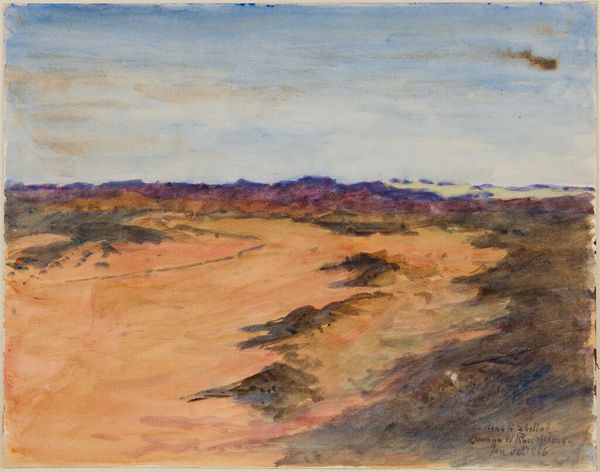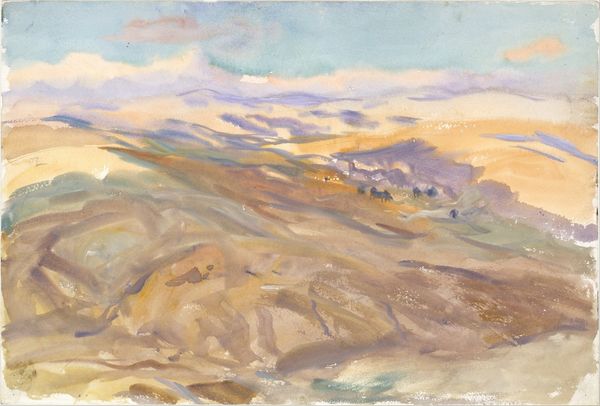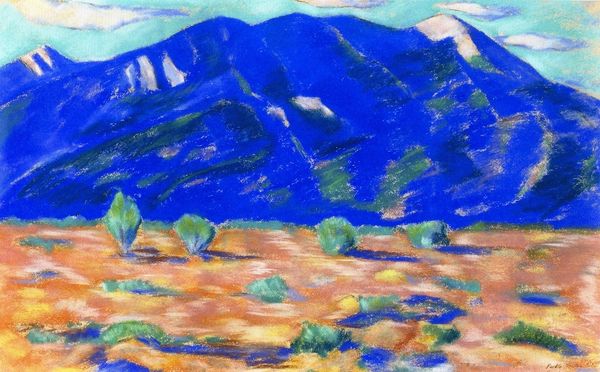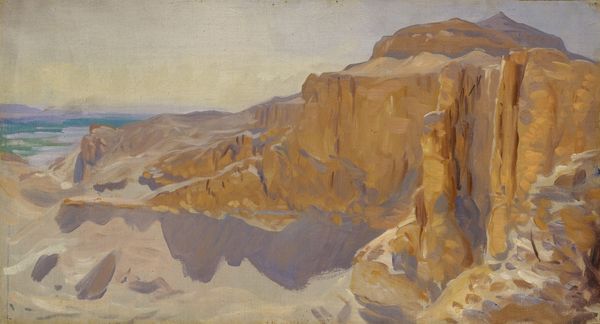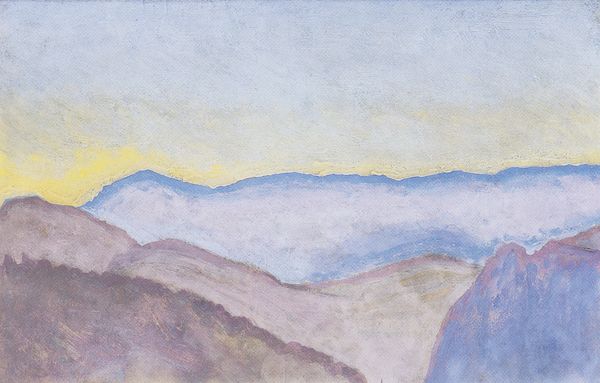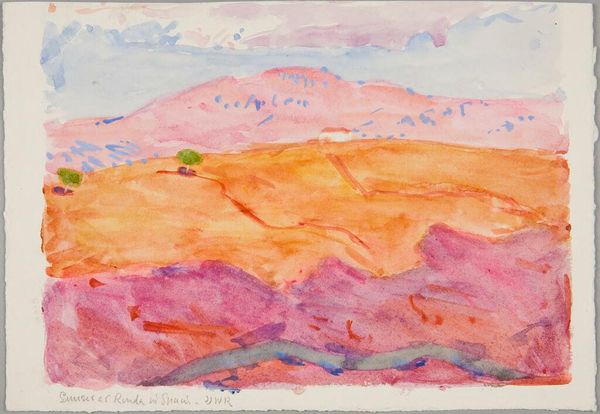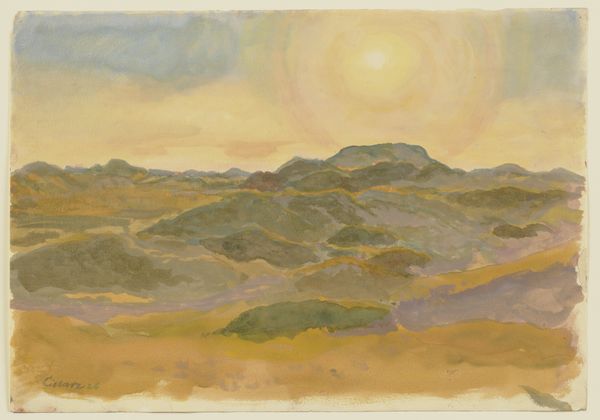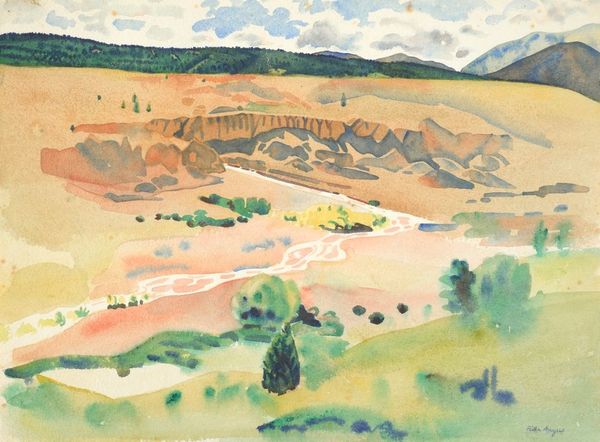
drawing, coloured-pencil, graphite, pastel
#
drawing
#
coloured-pencil
#
landscape
#
oil painting
#
graphite
#
pastel
#
modernism
Copyright: Public Domain: Artvee
Editor: Here we have Marsden Hartley’s "New Mexico," created in 1918, a drawing using graphite, pastel, and coloured pencils. There’s a quiet stillness about it. What's your interpretation? Curator: It's fascinating how Hartley engages with the landscape here. Beyond the surface depiction, this work signifies a search for belonging, for grounding. What does "New Mexico" mean as a geographical space and a cultural entity in the context of early 20th-century American modernism? Consider Hartley's position as a queer artist navigating a heteronormative society; how might the vastness and seeming emptiness of the landscape mirror his own sense of displacement, but also, perhaps, offer a space for freedom and reinvention? Editor: That’s a perspective I hadn't considered! So the landscape isn't just scenery, but also a reflection of Hartley’s identity? Curator: Precisely! Think about the romanticism attached to the "frontier," but then interrogate who gets to participate in that narrative. Whose stories are privileged, and whose are erased? And, what does it mean to represent Indigenous land from the perspective of a white artist? These are questions we must confront when we look at landscapes of this period. Editor: That makes me see it very differently. It's a beautiful image, but layered with complexity. Curator: Indeed. It reveals the tension between aesthetic appreciation and critical engagement. By examining art through the lens of identity, politics, and historical context, we get a much richer understanding of not only the artwork but also of ourselves. Editor: This has given me so much to think about! It's exciting to see art history as an ongoing critical conversation.
Comments
No comments
Be the first to comment and join the conversation on the ultimate creative platform.

